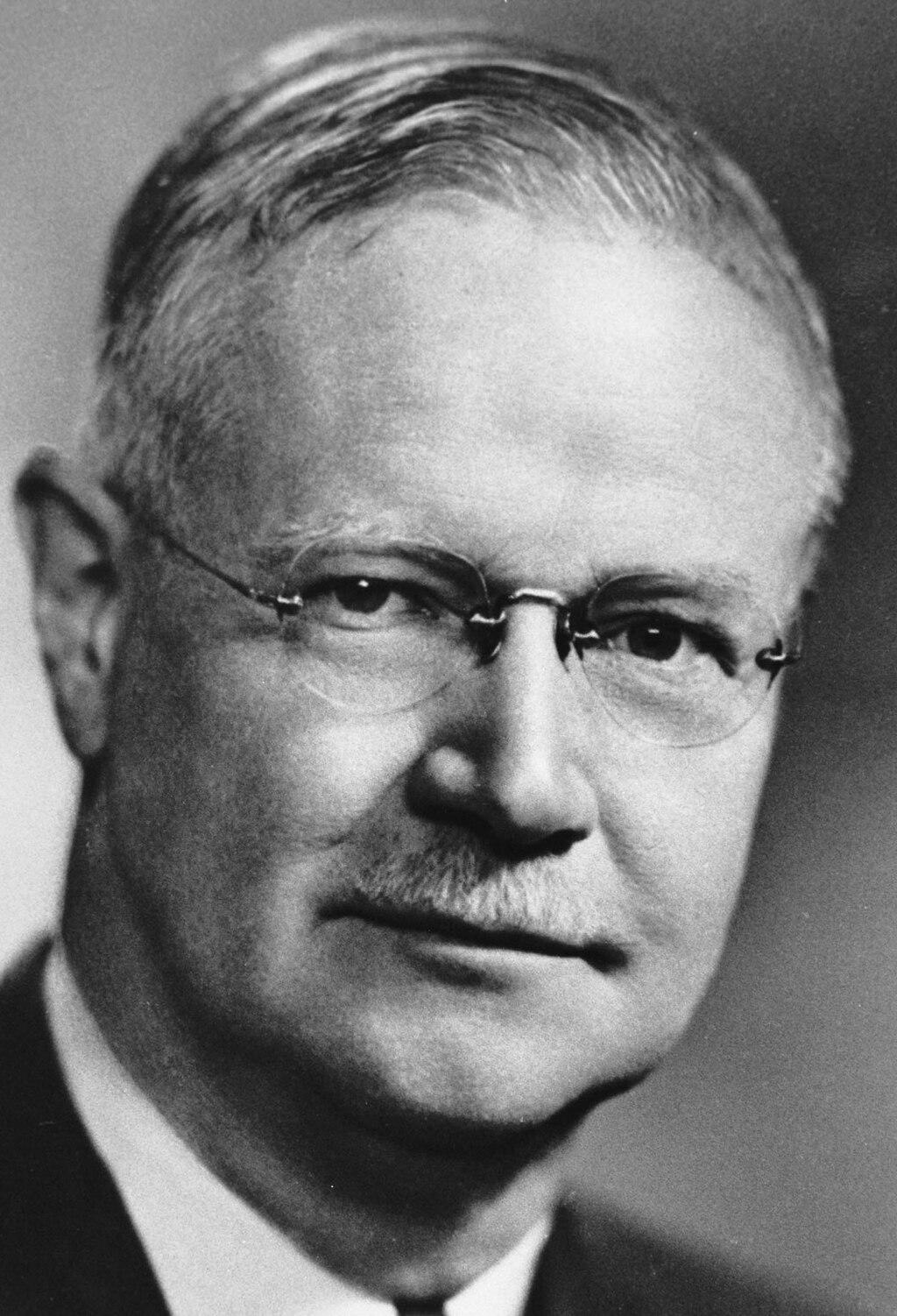Infant nutrition is an essential foundation for any society - healthy babies become healthy children and adults. When there are gaps of deficiencies in the earliest moments of human life, those issues can become more significant as an infant grows into a toddler and child.
For this reason, the invention of pablum by Frederick Tisdall and Theodore Drake is a hallmark in Canadian medical history. Through their invention of fortified infant cereal, Tisdall and Drake enabled the growth and development of generations of infants.
The story of pablum is also interesting because it is a story of collaboration across disciplines. Anyone aspiring toward a career in medicine, biochemistry, and nutrition can truly witness the impact of inquiry and invention through the story of this revolutionary food.
Let’s explore the discovery of pablum and why it was so important for Canadian society.


What is Pablum?
Pablum is a nutritious, pre-cooked, digestible multi-grain cereal for infants. It is made from a mixture of wheat, oat, and corn flours and fortified with essential vitamins and minerals, including iron.
The cereal was meant to be mixed with breast milk or formula to create a smooth and easy-to-digest food for babies. The word “pablum” comes from the Latin word “pabulum”, which means food.
Pablum was distributed throughout Canada and the United States. It is still used today. Revenue generated from pablum supported the Sick Kids Hospital in Canada and numerous research studies across the country.
Insulin is another great Canadian invention developed by healthcare professionals. Banting and Best were at the forefront of insulin discovery.
Why was the Discovery of Pablum so Important?
The discovery of pablum came at a critical moment in Canada. From the 1920s-1940s, Canada had high rates of infant mortality, largely as a result of malnutrition and diseases caused by contaminated and unpasteurized cows’ milk.
Mothers often produced their own homemade formulas and cereals, usually from soaked biscuits. However, these formulas did not have the adequate nutrients to prevent childhood illnesses including rickets (a disease that softened the bones of children). Moreover, these foods also upset the sensitive and underdeveloped gastrointestinal tracts of infants, causing diarrhea and other issues.
There was an urgent need for a safe, reliable, and nutritious food source for infants.
Was Pablum Invented in a Toronto Hospital?
The Hospital for Sick Children in Toronto saw the need for a solution to meet the nutritional needs of infants, and put a team of doctors and nutritionists to work.
In 1918, the Nutritional Research Laboratories (NRL) was opened in the hospital. The team included Dr. Alan Brown, the chief of paediatric research, Dr. Frederick Tisdall, Dr. Theodore Drake, and nutritionist Ruth Herbert. Collectively, they each brought expertise in pediatrics, nutrition, and biochemistry.
Canadian scientific achievements go beyond healthcare - learn all about David Schindler's work in environmental chemistry.
How was Pablum Developed?
Tisdall was appointed the director of the NRL. Under his leadership, the NRL researched and developed nutritious foods and products that contained essential vitamins. They started by developing the Sunwheat Biscuit in 1930, a biscuit for children containing vitamins and minerals. An agreement was made with McCormick manufacturing in London, ON, to produce the biscuit.
Sunwheat Biscuits, however, were ideal for children - not infants. Tisdall and Drake worked to develop an infant-friendly solution by creating a cereal similarly rich in minerals, vitamins, and protein that would not cause digestive problems. The cereal’s ingredients included:
- Whole wheat meal
- Oatmeal
- Corn meal
- Wheat germ
- Bone meal
- Brewer’s yeast
- Alfalfa
- Salt
The recipe was fortified with calcium phosphorous, iron, copper, and five vitamins. Early versions, however, required long cooking times, and staff and researchers complained that the cereal tasted overly bland.
Tisdall and his team eventually learned of a new process to dehydrate milk with a heated drum, and used similar techniques to produce the cereal they had been developing. The formula was cooked in a large pressurized steam kettle, dried on the rotating drum, and scraped off.
What resulted was a dry, flaky powder that maintained all the nutrients. Mothers could easily and quickly mix the cereal with milk or water, and serve it to infants.

What was the Impact of Pablum on Canadian Society?
After pablum was introduced to the public in 1931, its success became clear as infant nutritional deficiencies and related diseases rapidly declined. Pablum became a staple item in diets for babies in Canada and around the world. Key features of pablum include:
- Nutritionally complete, with a balanced combination of vitamins, minerals, fats, and protein.
- Easy to prepare because it was already pre-cooked and needed only to be mixed with water, formula, or breast milk.
- Digestible for infants, reducing the risk of gastrointestinal issues.
- Fortified with nutrients like iron to combat common deficiencies in babies such as anemia.
- Pablum is still sold today in different flavours from Heinz.
Want to learn more about great Canadian scientists? There have been advances in the areas of healthcare, space exploration, and ecology.
Who Was Frederick Tisdall?
After learning about the invention of pablum, you are probably curious to learn more about Frederick Tisdall, the director of the NRL and lead researcher in the discovery of pablum.
Born on May 9, 1893 in New Brunswick, Canada, Frederick Tisdall sought a career in medicine and graduated from the University of Toronto. Interested in pediatric nutrition, Tisdall joined the Hospital for Sick Children in Toronto.
Though Tisdall made great advances in the area of child nutrition, it is important to note that his reputation has been deeply tarnished due to his involvement with unethical and harmful experimentation on Indigenous children in Canada. Tisdall died in 1949.

Frederick Tisdall is known as the Canadian pediatrician who played a key role in the development of pablum. However, his role in unethical experiments on Indigenous children remains a blemish on Canada's history.
Does space come to mind when you think about Canadian innovation? The Canadarm is the country's greatest contribution to international space exploration.
Who was Dr. Theodore Drake?
Dr. Theodore Drake, who is also credited with the invention of pablum, was born in 1891 in Webbwood, Ontario. He graduated from the University of Toronto with a degree in medicine and served in the medical corps during the First World War.
Drake was notable in his achievements beyond his contribution to the development of pablum. He received the Order of the British Empire for establishing nutrition levels for meals consumed by the Royal Canadian Air Force and meals for prisoners of War. He wrote extensively about pediatrics.
Interestingly, his widow reportedly ate pablum for breakfast regularly.
Interesting Facts about Pablum
How Can I Pursue a Career in Nutritional Research?
If you are inspired by the stories of great Canadian inventions such as pablum, you may be wondering how you can be part of this tradition of medical and nutritional research.
Perhaps your passion is helping infants and children, or maybe there is a disease or ailment you feel strongly about finding solutions for. Whatever your motivation is, you can certainly find a learning and career pathway that is right for you.
Leading Canadian universities and research institutions like the University of Toronto and the University of British Columbia have faculty with a wealth of experience and knowledge. They often partner with local hospitals, such as the Sick Children’s Hospital, and are leaders in the area of healthcare innovation.
Start by pursuing a bachelor’s degree in Science and specialize in the fields you are most interested in: microbiology, biochemistry, physiology, or public health. You may even consider fields like nursing or pharmacy.
Is research is where your passion lies? Consider applying for graduate school so you can pursue your research while learning and earning a graduate degree such as Masters or PhD. With a graduate degree, you can work in the field of medical research at a higher level, or pursue a career in the healthcare industry.
If graduate degrees are not something you are interested in, consider a college diploma or certificate in areas like lab technician or research assistant. With the right academic background and qualification, you may find your way into a research team or project that meets your interests!
Summing it Up
The development of pablum is one of the most important milestones in Canadian medical history. The Hospital for Sick Children funded medical research to develop the product, and once it was introduced to the market countless lives were saved.
The discovery of pablum set a standard for infant foods and showed the importance of fortified foods in preventing malnutrition. Tisdall and the NRL team demonstrated the lasting impact of collaborative medical research, and continues to inspire future medical professionals.
If you see yourself working collaboratively to solve problems for health issues in your community, you should consider a learning and career pathway in science, medicine, or nutrition.















